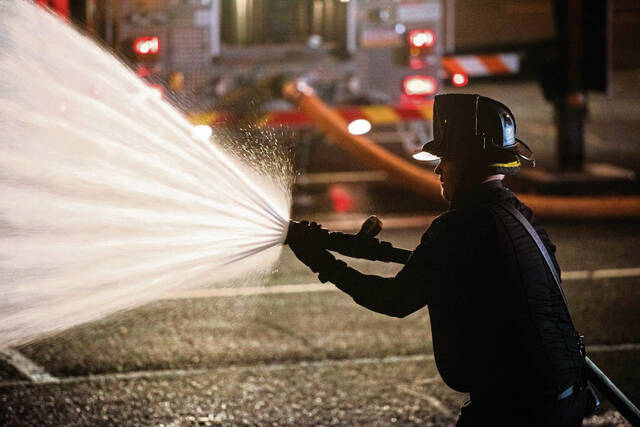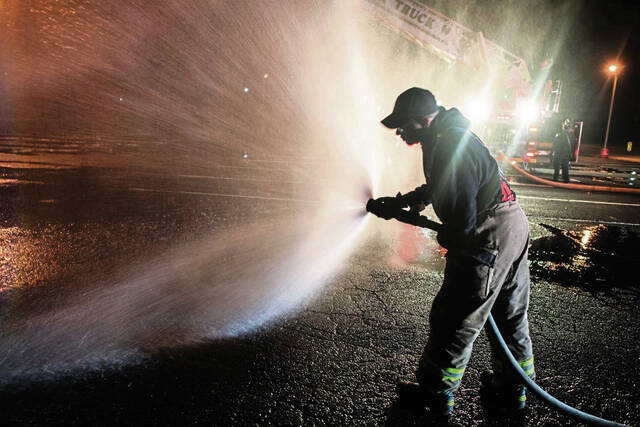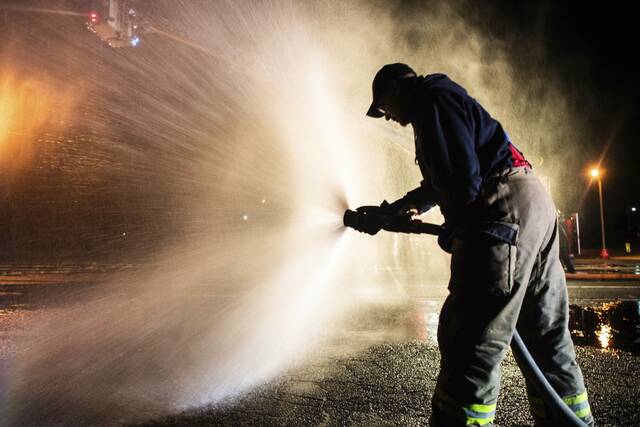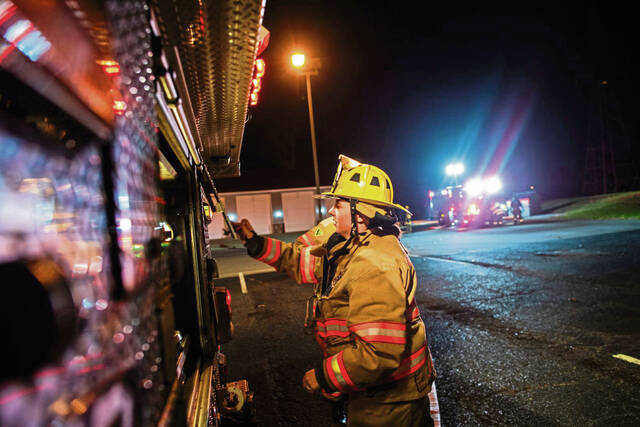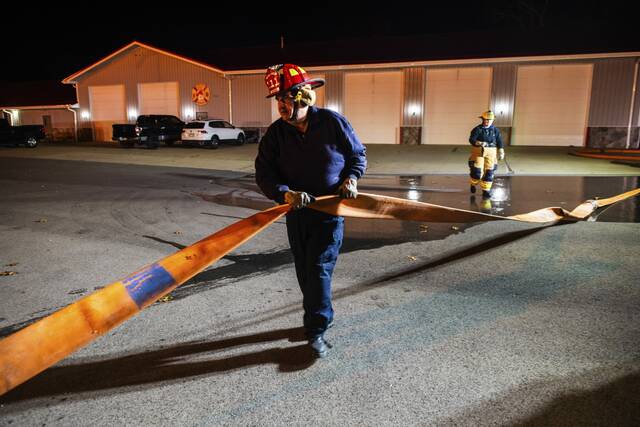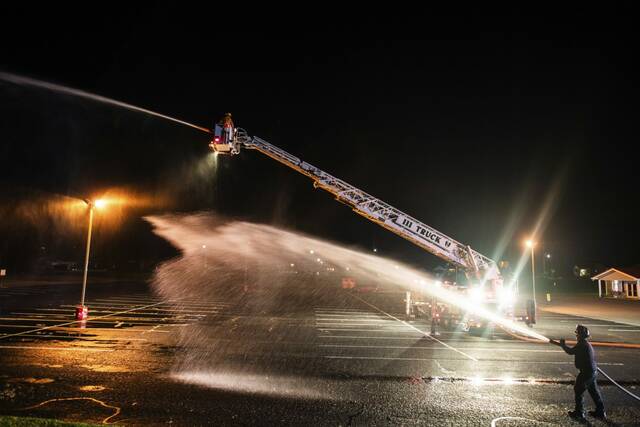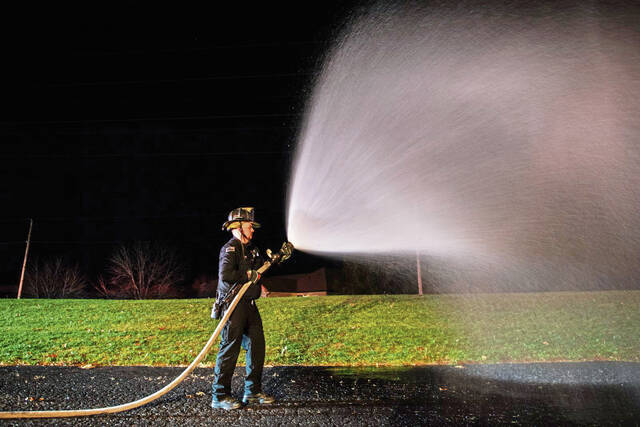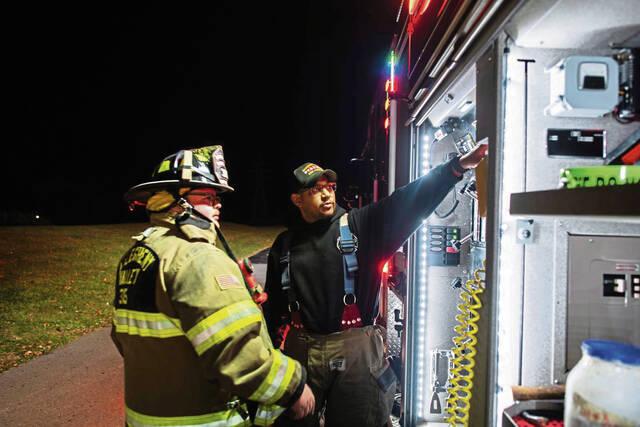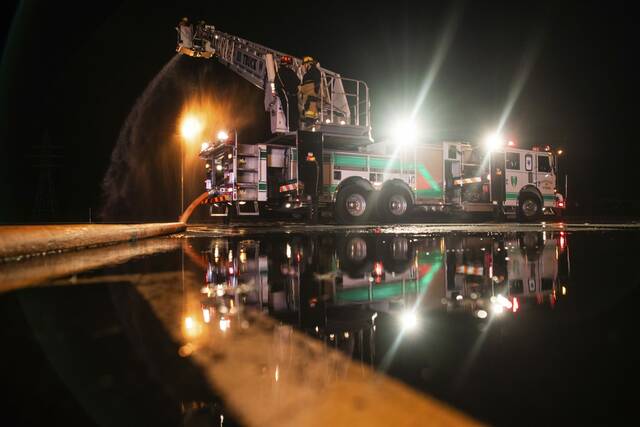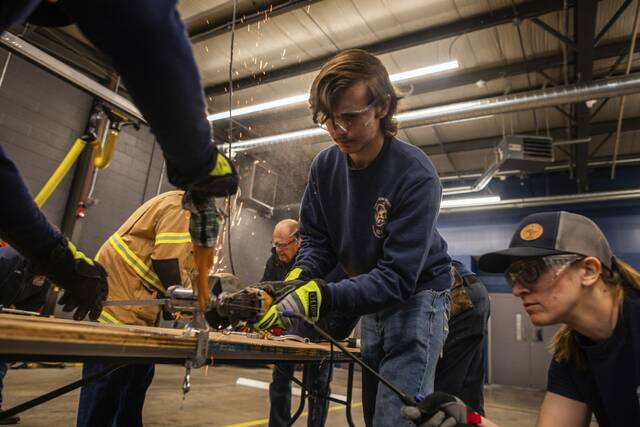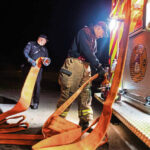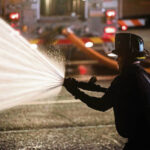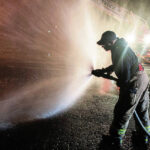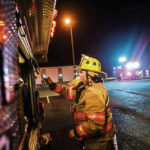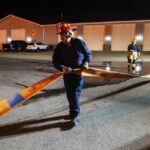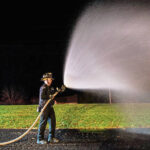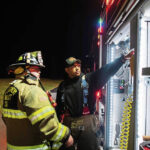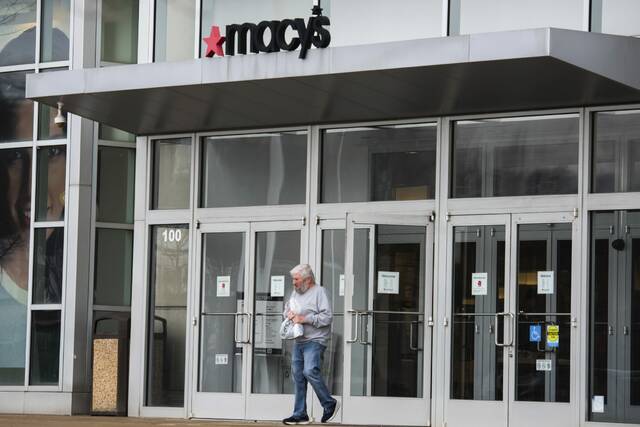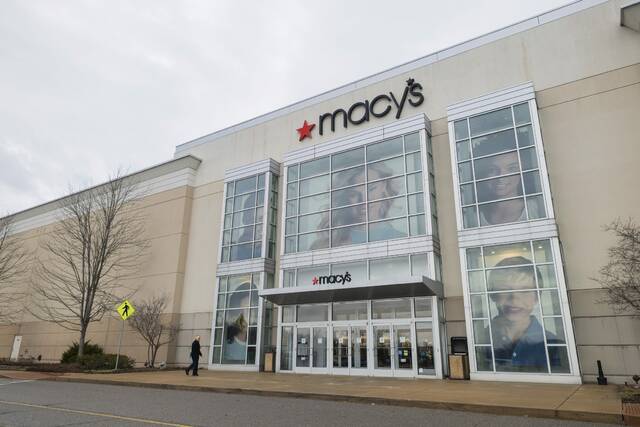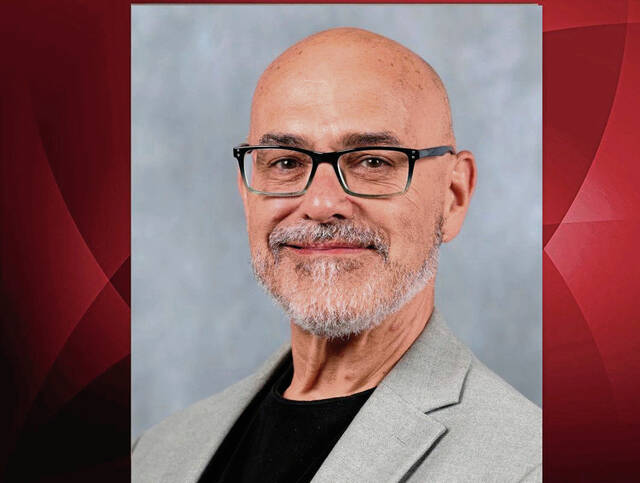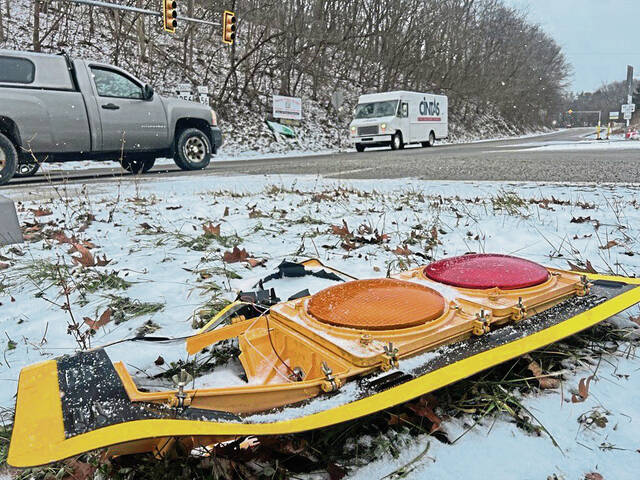When Sam Boak joined the Harmar Volunteer Fire Company in the 1990s, “you could show up any time of day and there would be six guys sitting there having a good time.”
In a few short years, it became tough to get enough people to respond even when the sirens wailed.
The number of volunteer firefighters in Pennsylvania plummeted almost 90% from 1970 to this year, according to the Pennsylvania Fire and Emergency Services Institute. It is estimated only about 38,000 volunteer firefighters remain in the state.
There are almost 2,500 fire companies in Pennsylvania, according to a report from the state House Republican Caucus. Of those, 90% are volunteer services.
For many of them, it’s becoming a matter of merge or close.
Shawn Reagan became chief of the Youngstown-Whitney Volunteer Fire Department in January.
Youngstown-Whitney is a regionalized department that merged the Youngstown fire department and Whitney-Hostetter department in Unity in 2021. Reagan said the departments spoke intermittently for years before reaching an agreement. He said the actual merging process took a little more than two years because of covid.
Whitney-Hostetter had only a handful of members when leadership decided to combine with Youngstown. While the merger didn’t change the number of volunteers dramatically, the departments were able to sell duplicate equipment to give the station a temporary bump in funding.
Based on his experience, Reagan recommends struggling departments look into merging with neighbors.
“Generally, most departments are struggling for manpower and struggling for funding,” he said.
Harmar took that advice more than a decade ago, consolidating with Springdale Township in 2012 to create the Allegheny Valley Volunteer Fire Company, which welcomed Cheswick into the fold in 2022.
It was the best thing to happen, according to Boak.
“We’re not spending money on duplicate services. We have more manpower, and grants come more easily,” he said.
“We are getting bigger and better. I would encourage any department to do their due diligence and consider merging.”
Slowly but surely
Whether it’s pride or skepticism, regionalization is a move many emergency services have been reluctant to embrace despite the data to support it.
Even with the large number of volunteer fire departments in the state, the Department of Community and Economic Development (DCED) is working with only about 40 departments on consolidation studies.
But the inability to attract volunteers — who are estimated to save municipalities in Pennsylvania a combined $10 billion a year in salaries and benefit expenses — has been called a public health crisis, according to firerescue1.com.
Advocates call on the state to offer more tax credits, education credits or other incentives to attract volunteers.
State Sen. Lindsey Williams, D-West View, said she supports efforts by government to increase first responder staffing but isn’t sure it’s being handled the right way.
“The state definitely needs to both incentivize and provide more logistical support than we currently do,” she said. “In an ideal world, the state would pay people directly for their efforts, not make them jump through tax credit hoops that may or may not help them.”
In Tarentum, the idea of consolidation is inching forward with open minds.
The borough is launching a study of its three departments — Eureka Fire-Rescue, Highland Hose and Summit Hose — led by DCED. The study, proposed in 2018 but stalled by the pandemic, will gauge finances, garage upkeep, equipment cost, training and other expenses. It is free to the borough.
“We’re all for helping citizens,” Highland Hose President Robert Stoebener said. “If the borough wants to pursue regionalization, we would be open to it.”
Site visits and fact-finding are expected to take up to a year.
Brad James, Eureka chief, said a merger is likely the only way to save emergency services, not just in Tarentum, but across the state.
“From someone who has four decades in, I don’t see a lot of options without some type of partnership,” James said. “Whether it’s a merger or fire protection district, the semantics don’t matter. Consolidation is the only way to survive.”
Anthony Kovacic, chief of Hempfield Volunteer Fire Department, said his department was approached by New Stanton fire station in August to join another state-led study with neighboring municipalities New Stanton and Youngwood to see how the departments can improve fire services.
“Trying to find volunteers is very difficult in the service right now,” Kovacic said. “It’s been declining for quite a while.”
Changing demographics, work habits and social calendars have created a time crunch for potential volunteers. The result is delayed response or insufficient manpower, according to the Pennsylvania Fire and Emergency Services Institute.
Hempfield’s Midway-St. Clair fire station falls about 3 miles away from the Youngwood Volunteer Fire Department and about 6 miles away from New Stanton’s station. While Hempfield is not required to adhere to what the study recommends, Kovacic said he’s all ears.
“Certainly, having folks come in and take a look at the operation is something we’ll take,” he said.
Since the study is in its infancy, there is no guarantee the municipalities will be combining departments, but Kovacic said regionalization is becoming more common.
He said there is an immense cost of running separate operations with how much equipment and uniforms cost. Consolidating firehouses helps multiple municipalities shoulder that burden and combines volunteer numbers.
“I think, when you look statewide, you’re starting to see communities talk about a consolidated effort,” Kovacic said.
A ‘lifesaver’
Even for small departments, the annual cost of operations can be staggering.
A hearing by the state House Republican Caucus last year showed volunteer fire department budgets can top $2 million a year. Most of that money, though, is earmarked for things such as mortgages on fire stations, payments on trucks and other vehicles and insurance premiums.
That leaves only a small percentage left for actually running a department. The cost to equip one firefighter, the caucus reported, was $28,000. Money from host municipalities and various fundraisers, it was found, barely cover operating expenses.
Reagan, of the Youngstown-Whitney department, said Unity has a 2-mill fire tax that supplies the department with the $550,000 to $600,000 per year it needs to operate. He said the departments in the Unity Fire Bureau host fundraisers throughout the year that can vary the budget. Even with additional funding from these efforts, he said, the departments have to save for a long time before being able to purchase new fire engines and other needed equipment.
The department recently purchased a $900,000 fire engine. It will take years of fundraising to pay it off.
In Aspinwall and Sharpsburg, competing departments with storied histories merged in 2023 to create Southern Allegheny Valley Emergency Services.
It was a lifesaver, Chief Mike Daniher said.
They’ve optimized response times, enhanced training programs and streamlined administrative functions.
“We have successfully recruited new members, formed committees that aren’t all the same people on them, created more outreach in the community, started a youth fire camp and continue to grow,” Daniher said.
The driving force was the need for more volunteers and to boost efficiency. Both towns kept their fire stations.
They’ve since eliminated two vehicles, saving $750,000 in replacement costs, Daniher said.
“Since the merger, our volunteers have answered 100% of all calls,” Daniher said. “We can respond to the closest station instead of only previously being able to respond to a specific station.”
Daniher said he hopes one day to solicit all neighboring departments in the Lower Valley to “join together and build one large team for our communities.”
Short- or long-term solutions
At Tarentum’s Eureka, there was an active roster of about 45 members in the early 1980s. It’s half that now.
The same goes for neighboring Highland Hose, which has about 15 active members, and Summit Hose, where there are about 20.
Josh Fox, chief of Summit Hose, said fire stations were a community hub just 20 years or so ago.
“When I first started, there was always a lot more people, no matter what time of day,” said Fox, a member for 23 years.
The family dynamic is constantly evolving and has made the time when fire halls were the center of small towns a thing of the past.
“You don’t have that small-town atmosphere anymore. There’s nothing really to blame for it,” Youngstown-Whitney’s Reagan said. “Times have changed. Society just progressed so people just don’t have time to do it. (Volunteer firefighting) is not a hobby. It requires a good deal of training and commitment.”
Fox said Summit Hose is all in on a potential merger.
“It’s no secret that volunteers are dwindling,” he said. “The bottom line is we’re here for the community, so whatever we can do to continue providing services, we will.”
It is too early to say what a merger would look like. The three fire stations in Tarentum are old, all approaching 100 years. They lack modern technology and require a lot of upkeep, Fox said.
“You would need to put everyone under one roof, so the ideal thing to do would be to build a new station,” he said. “There’s so many variables that it’s a ways off to finding funding and making a plan.”
Still, the borough is a step ahead because the fire departments work well together, Fox said.
“That’s half the battle right there,” he said.
Tarentum Manager Dwight Boddorf said, once the study is complete, he plans to review recommendations with the departments, council and the public.
“We have already had several discussions with the fire departments about the challenges we face together, including rising costs, decreasing volunteer numbers and fluctuating donation levels,” Boddorf said. “These factors underscore the need for everyone to play a more active role in ensuring the long-term success and sustainability of fire protection services for the borough.”
Mergers, while beneficial, don’t address the lack of volunteers. They just group the existing volunteers in a single department. While that has immediate benefits and cost savings, many still look toward paid departments as the ultimate solution.
For the most part, though, paid departments remain a pipe dream for many communities.
“Paid services isn’t entirely out of the question, but it’s something that could take decades to attain. It would require a large-scale regionalization of all the departments in the school district,” said Fox of Summit Hose.
Fox continued: “Dayside is where departments are really, really hurting. That would require a lot of planning and a lot of funding. I don’t think anyone understands how much it would cost to have paid services.”
In a time when fire engines cost more than $1 million and equipment needs to be modernized every few years, all signs, at least for now, point to mergers as a solution.
In Harmar, Springdale Township and Cheswick, there was an unnecessary duplication of costs for equipment, training and stations, Boak said.
“We used to have four engines between us, and now we have two,” Boak said. “We can do the same job with what we’ve got.”
After the merger, manpower grew to more than 20 active members responding from the combined station in Springdale Township rather than a few from three different places. It means, no matter the time of day, Allegheny Valley usually can respond to calls with a full crew.
“My personal opinion on mergers is that they should’ve happened about 20 to 25 years ago,” Reagan said. “Mergers are not going to save the volunteer fire service. It’s a short-term solution to try to get by until municipalities are going to get to that point where they have to look at hiring firefighters.”
He said it likely will come down to municipalities speaking with residents to see whether they’re willing to pay more for reliable services or risk not having them when they’re needed.
Youngstown-Whitney is one of seven departments that make up the Unity (Township) Fire Bureau. The bureau requires volunteers to work together across the township. While calls don’t often require 10 engines, they do require the people those engines transport to the scene. Reagan said, if they’re lucky, three or four people will be able to respond to a call.
Reagan cited personal feelings as the biggest stumbling block fire departments face when the option of merging comes across a desk.
“I think a big problem for volunteer departments is that we’re very proud organizations,” Reagan said. “We can be very reluctant to admit there are problems and even more reluctant to ask for help.
“The public generally doesn’t care. They want help in a timely manner with trained professionals. They don’t care what the name on the truck is.”



